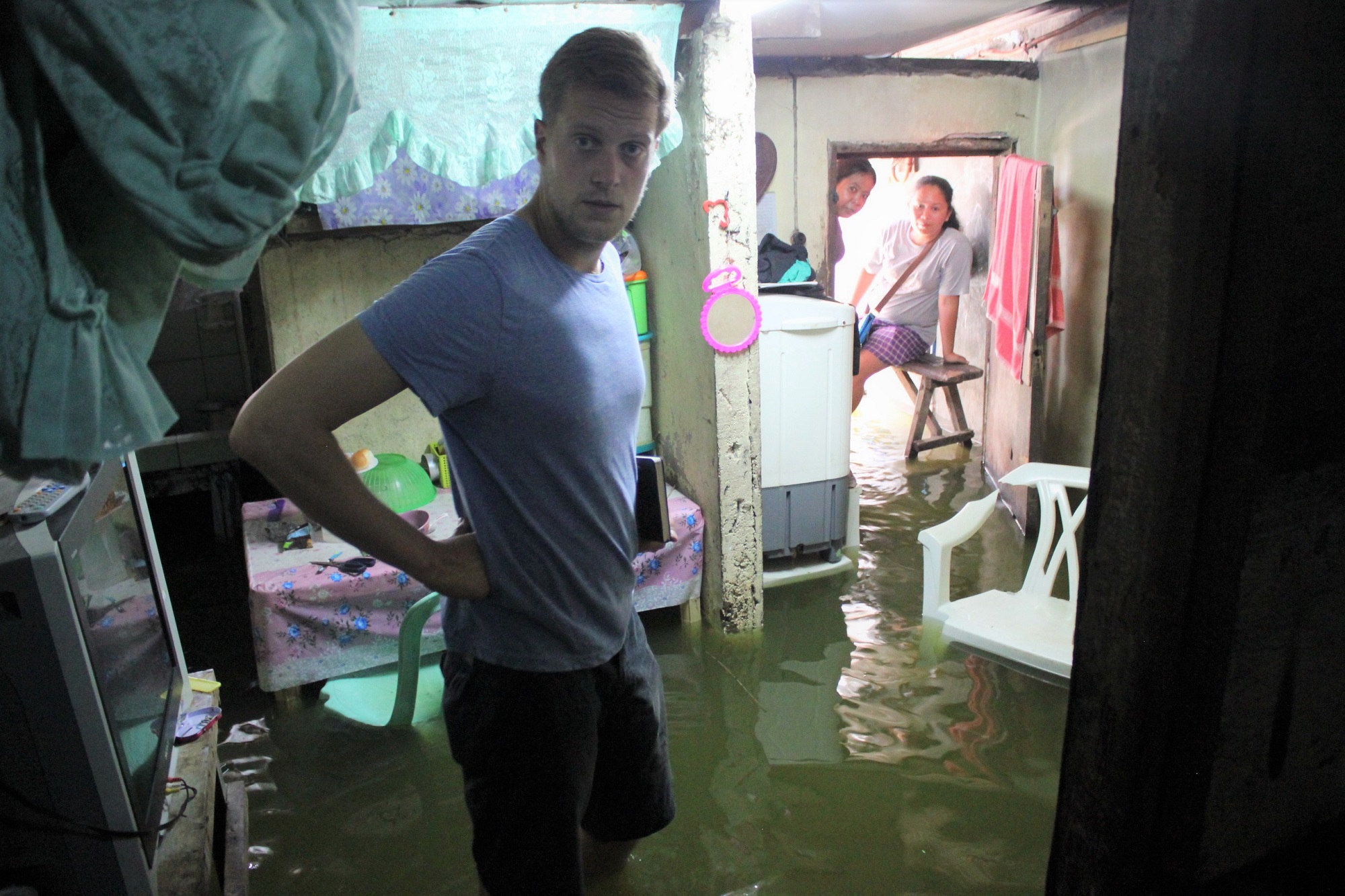What do you do if your house gets flooded on a regular basis? Pieter Ham is part of a team creating a unique solution: floating houses.
Pieter Ham in a flooded home in the Phillipines. (Photo: Personal collection)
“I did my bachelor’s in Architecture here at TU Delft and then did a bridging programme towards Building Engineering which is at the Faculty of Civil Engineering. I did my master’s and now I’m doing my PhD here which means I’ve been at TU Delft since 2008.
My research is on floating homes in flood plains with a focus on Southeast Asian deltas. To be more specific, we are now working in the Philippines in an area around Manila. That area gets flooded on a daily basis which is mainly caused by tidal movements and heavy rainfall. Homes, streets, schools, everything get flooded very regularly. In these areas the population is also growing, but the land is quite full now. So the big question is where do you build new homes?
In this area there used to be a lot of rice fields, but now they are permanently under water. We are researching how we can build floating homes on these former rice fields so people can live in a dry, safe place on the water. You have a lot of space where you can build those homes.
It’s not only a floating home, but we are trying to make it as sustainable as possible
Together with Joran van Schaik, I started working on this during my master’s thesis. We started making the first design. Then I started the PhD and worked towards making the design a buildable thing. We raised money to build a pilot version of this home in the Philippines. We worked with local partners, municipalities, contractors and material suppliers and we constructed the first floating home. It’s currently being tested; we’re measuring things like indoor temperature and natural ventilation. It’s not only a floating home, but we are trying to make it as sustainable as possible. That means you have to make use of low-tech design principles. For example, you can protect the building from direct sunlight so it won’t get that hot inside and make use of natural ventilation. Even more importantly, we are also testing the user experience by having people live in the building for a period of time. At the end of their stay, we interview them about how they experienced the floating home.
We started a foundation called Finch Floating Homes. We are currently looking into how to start a company out of it. Cool things are happening now. The municipality close to where we built the pilot is requesting more floating homes so we are working together with them on how to fund and how to move forward with this project. I’m currently trying to finalise my PhD, but it would be great if after that we can move on and build more floating homes in this area and maybe later in other areas around the world. It’s not only a local problem in the Philippines. A lot of Southeast Asian deltas are dealing with similar problems. And not only there, but all over the world, cities that are built close to the sea or close to deltas are dealing with similar problems.”
Want to be featured in Humans of TU Delft? Or do you know someone with a good story to tell? Send us an e-mail at humansoftudelft@gmail.com
Heather Montague / Freelance writer



Comments are closed.